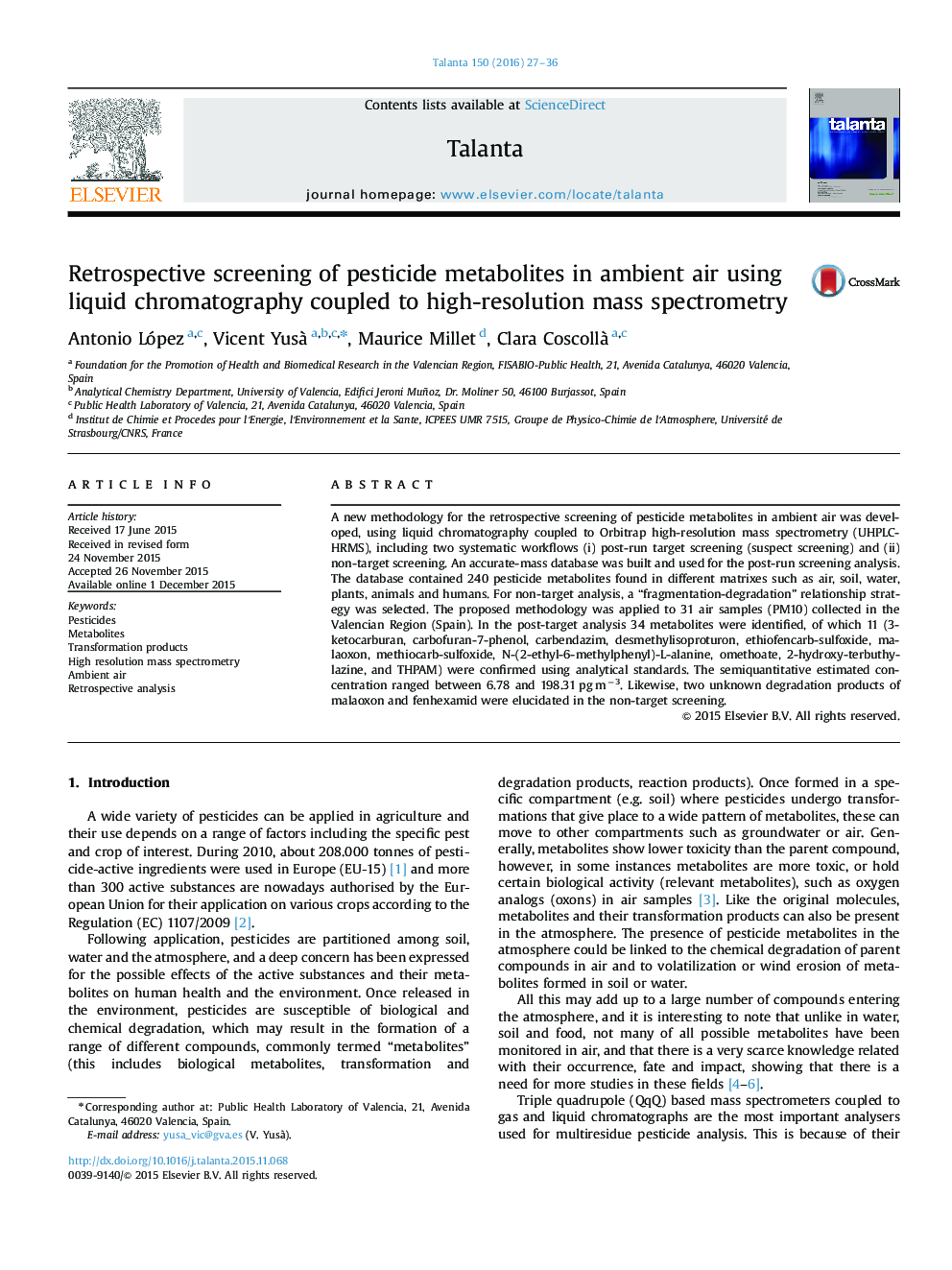| کد مقاله | کد نشریه | سال انتشار | مقاله انگلیسی | نسخه تمام متن |
|---|---|---|---|---|
| 1242141 | 1495785 | 2016 | 10 صفحه PDF | دانلود رایگان |
• A retrospective screening has been developed for airborne metabolites of pesticides .
• A customized database of 240 pesticide metabolites was built for suspect analysis.
• 34 pesticide metabolites were identified in ambient air.
• 11 metabolites were confirmed at concentration from 6.78 to 198.31 pg m−3.
A new methodology for the retrospective screening of pesticide metabolites in ambient air was developed, using liquid chromatography coupled to Orbitrap high-resolution mass spectrometry (UHPLC-HRMS), including two systematic workflows (i) post-run target screening (suspect screening) and (ii) non-target screening. An accurate-mass database was built and used for the post-run screening analysis. The database contained 240 pesticide metabolites found in different matrixes such as air, soil, water, plants, animals and humans. For non-target analysis, a “fragmentation-degradation” relationship strategy was selected. The proposed methodology was applied to 31 air samples (PM10) collected in the Valencian Region (Spain). In the post-target analysis 34 metabolites were identified, of which 11 (3-ketocarburan, carbofuran-7-phenol, carbendazim, desmethylisoproturon, ethiofencarb-sulfoxide, malaoxon, methiocarb-sulfoxide, N-(2-ethyl-6-methylphenyl)-L-alanine, omethoate, 2-hydroxy-terbuthylazine, and THPAM) were confirmed using analytical standards. The semiquantitative estimated concentration ranged between 6.78 and 198.31 pg m−3. Likewise, two unknown degradation products of malaoxon and fenhexamid were elucidated in the non-target screening.
Figure optionsDownload as PowerPoint slide
Journal: Talanta - Volume 150, 1 April 2016, Pages 27–36
